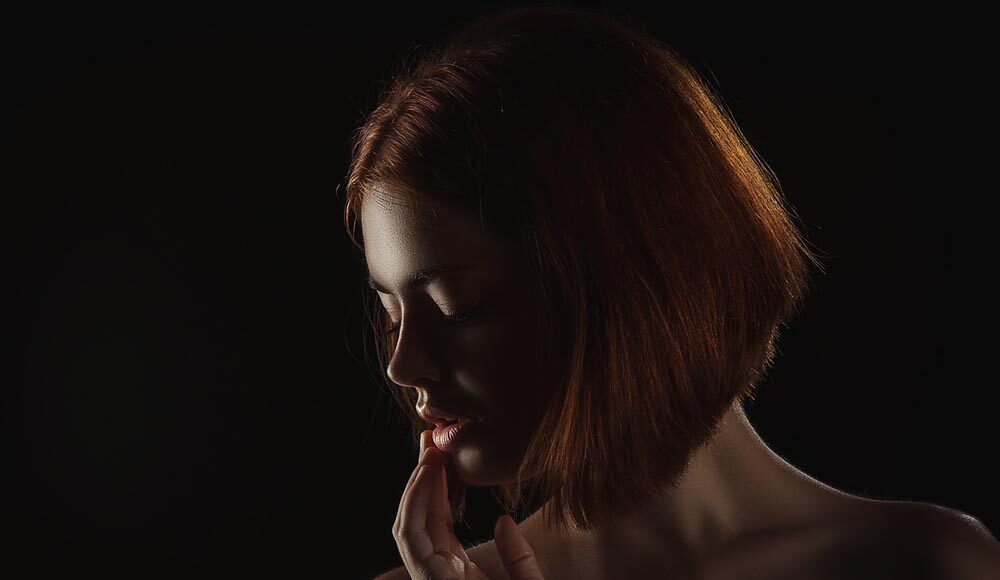Backlighting photography uses a light source positioned behind the subject to outline their silhouette delicately.
It emphasizes contrast and depth, drawing the viewer’s attention to the subject. This illumination technique makes your pictures mysterious and dramatic. It evokes strong emotions, which are essential for visual storytelling. This technique opens up endless creative possibilities in natural and staged shooting environments.
This article observes practical tips, tools, and examples to help you create stunning backlight portraits.
Setting the Stage
If you work with ambient illumination, plan your photo shoot carefully to catch golden hours. The sun will illuminate your subject evenly without introducing unwanted shadows. Position your subject with the setting sun directly behind them to capture a glowing outline. Lower your exposure so the subject appears as a dark shape against the warm, vibrant background.
You can recreate this effect in indoor conditions using diffusers. They will let you control the light intensity to ensure no important part of your composition is washed out. Use reflectors to bounce the beam back onto the subject for softer shadows. A lens hood can help you prevent unwanted glare while keeping the model in focus.
Use spot-removal or masking tools in your portrait editing software to eliminate unwanted flares post-shot. Experiment with angles to achieve proper exposure balance for your dramatic lighting portraits.
Using manual camera settings gives you better control over light and shadows. Adapt these settings to changing light conditions, especially when shooting outdoors. Here are some basics to keep in mind:
- A wide aperture (e.g.,f1/8 or f/2.8) blurs the background. It adds dramatism to your photo and defines your model as the focal point.
- Keep the ISO as low as possible. The ISO between 100 and 400 will preserve sharpness and clarity in your image without introducing unwanted grain. You may need to increase it slightly (up to 800) but avoid getting too high if your camera does not handle high ISO well without compromising the final image quality. Ensure your photo editor includes a noise reduction tool to eliminate the negative consequences of high ISO.
- A shutter speed of 1/250-1/500 seconds is suitable for sharp and unblurry dramatic portraits, but this parameter should be readjusted regarding the illumination intensity.
Crafting the Mood
Use shadows creatively to add depth and shadows to your compositions. Position your subject so that part of their face or body is in shadow. This contrast introduces a strong emotional undertone. One of the effective portrait editing tips for this technique is using a slight vignette. It can draw the viewer’s eye toward the subject, enhancing the drama of your portrait. Keep the effect subtle. It should enhance the overall balance instead of overpowering it.
Overexposed backlighting can wash out your subject and lose detail. As stated above, diffusers can help eliminate this issue in outdoor conditions. As for the studio illumination equipment, you can manually decrease their intensity or move them further from the subject to prevent overexposure.
Place the light source slightly above and behind the subject. The halo effect outlines your model’s face shape with a gentle glow. Use post-processing tools to subtly enhance this glow. Increase the highlights and adjust the whites to emphasize the backlit edges. Avoid overdoing and keep the natural look.
For a more pronounced outline, use rim lighting. Position the light source directly behind the model. Emphasize the edges of their face or hair with properly adjusted angles for mysterious high-contrast dramatic portraits. Tools like Luminar Neo or Lightroom allow precise control over contrasts during editing. Darkening the shadows and boosting the blacks can further enhance a striking interplay between light and dark.
Use neon signs, streetlights, or car headlights as your backlight sources. The urban environment introduces bold contrasts and vibrant colors. Incorporate motion to emphasize energy and vibrancy further. Ask your model to flip their hair, spin, or walk slowly. It will enhance your visuals with a storytelling element.
Backlighting natural elements like trees, leaves, or tall grass can create intricate patterns and highlight unusual textures for conceptual and fine art photos. Props like sheer fabrics, glass prisms, or a spray bottle of water can add an extra layer of context and transmit your unique artistic vision more effectively with multilayered creative compositions. Backlighting a mist of water creates a shimmering effect, while transparent fabrics can diffuse illumination artistically.
Adjust the picture’s color temperature to convey the intended mood. For warm, golden-hour portraits, increase the warmth and saturation slightly. It will enhance the natural tones without introducing unwanted artifacts. Experiment with cooler tones and subtle desaturation if you want the final results to be mysterious and moody.
Conclusion
Backlighting photography is an art form that transforms ordinary portraits into dramatic, visually stunning works of art. Mastering the fundamentals, experimenting with creative ideas, and refining your images through thoughtful post-processing lets you create captivating and inspiring portraits. Push your creative boundaries, explore different settings, and let backlighting elevate your photography to new heights!
##




